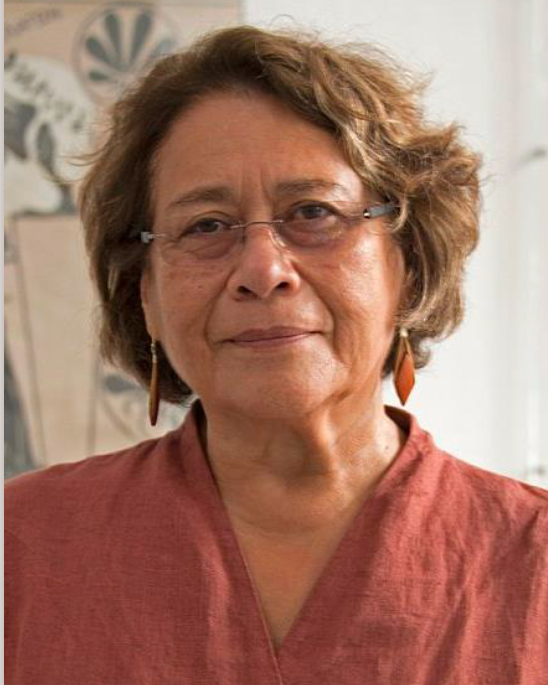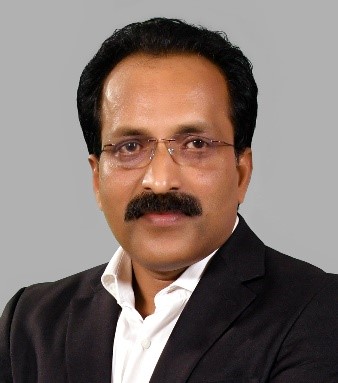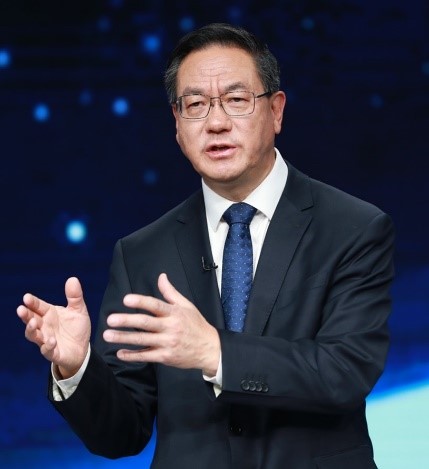- Portobet platformuna erişim sağlamak için güncel bağlantıları takip etmek son derece önemlidir. Özellikle yeni üyeler, sorunsuz kayıt ve hızlı para yatırma avantajlarından yararlanarak Portobet’in sunduğu güvenli bahis ortamının keyfini çıkarabilirler. Giriş sorunları yaşadığınızda, doğrudan resmi siteyi kullanmak hesap güvenliğiniz açısından en doğru tercihtir.
- Portobet giriş işlemlerinde en çok tercih edilen alternatif adreslerden biri olan porto-bet.net, kullanıcılarına sorunsuz erişim ve yüksek oranlı bahis imkânları sunuyor. Bahis severler, güncel Portobet giriş adresi üzerinden canlı maç izleme, özel bonus fırsatları ve kesintisiz ödeme çözümleriyle beklentilerinin ötesinde bir deneyim yaşayabilirler.
- Spor tutkunları için Portobet mobil uygulaması ile hem iOS hem de Android cihazlarınızdan, anında ve güvenli şekilde bahis oynamak mümkün. Mobil giriş sayesinde Portobet’in hızlı para çekme, güncel maç analizleri ve canlı destek avantajlarından, dilediğiniz her yerde kesintisiz yararlanabilirsiniz. Güncellenen uygulama ile erişim sorunları tamamen ortadan kalkar.
- CSV Viewer makes it easy to open, explore, and filter large CSV files directly in your browser. With its user-friendly interface and advanced data analysis tools, CSV Viewer helps you manage, visualize, and process spreadsheet data more efficiently for all your workflow needs.
- Base64 Encode offers a fast and secure way to convert any text or file to base64 format online. This tool streamlines data encoding for web projects, making data transmission, storage, and sharing more reliable, whether you’re a developer or just need a simple encoding solution.
Plenary session

The scientific program is complemented by the plenary session taking place on Wednesday afternoon May 28 in room SCHWEITZER (Ground floor), with three speakers. The line-up of the plenary speakers is outstanding and these events are wonderful opportunities to learn and to be inspired. The collective wisdom, perspective, and leadership experience of the three individuals will be a highlight of the conference week.
This central session will continue with the presentation of the E-MRS EU-40 Materials Prize recipient. The latter is a prestigious prize awarded to researchers under 40 who are showing exceptional promise for leadership and have made outstanding and innovative contributions to Materials Research in Europe.
It's hard to imagine a richer offering of speakers. And that's the point of the plenary session: they provide a shared experience for all conference attendees. Plenary session is a time for a break from the details of your week, a time to be stimulated and to reflect on the values that brought us to the field and that continue to motivate us each day.
The social event open to all participants will conclude the plenary session.
Preliminary program
Wednesday May 28 from 16:00 to 19:00
16:00 - Welcome Address by A. Kenyon, E-MRS President
16:10 - Introduction of the first plenary speaker by Patrick Bressler / Sanjay Mathur, Conference Chairs
16:15 - Prof. Dr. Clivia M. Sotomayor Torres, International Iberian Nanotechnology Laboratory
 |
2 Optomechanics for room-temperature phononic circuits C.M. Sotomayor Torres
|
|
|
We will review results from my groups over the last decade in phononics from two perspectives: the phonon-photon interaction in condensed matter and the possible realisation of room temperature phononic circuits. Biography: Clivia M. Sotomayor Torres obtained her PhD in Physics in 1984 from the University of Manchester, UK. She held tenured academic appointments at Saint Andrews and Glasgow universities in the UK, at Wuppertal University in Germany and was a research professor at the National university of Ireland University College Cork (Tyndall National Institute). From 2007 to 2023 she was an ICREA research professor and group leader of the Phononic and Photonic Nanostructures group at the ICN2 in Spain. Clivia received awards from the Royal Society of Edinburgh, the Nuffield Foundation and an Amelia Earhart Fellowship from ZONTA International (USA). She carries out research in the science and engineering of phononic nanostructures, nanophotonics and thermal transport. In 2020 she was elected to the Academia Europaea. She is holder of an European Research Council advanced grant investigating phonon transport in topological waveguides. Since September 2023 she is the Director General of the International Iberian Nanotechnology Laboratory (INL) in Braga, Portugal, where she has set up a new research group. |
||
16:55 - Introduction of the second plenary speaker by R. Ratheesh, Conference Chair
17:00 - Dr. Sreedhara Panicker Somanath, former Chairman, Indian Space Research Organization (ISRO)
 |
Advanced Materials for Space Program: Sreedhara Panicker Somanath
|
|
|
In order to build rockets, spacecrafts and scientific instruments, space program relies substantially on the research contributions of R&D institutions and academia in India. New programs are in need of novel materials to cater to the development of advanced propulsion systems operating at higher temperatures and efficiency, building scientific instruments for space missions and light weight high strength systems for structures, energetic materials and other performance enhancing materials. Leading researches are focused in the application areas of electro-optical systems, magnetic materials, energy systems, EM and meta materials, thermal protection systems, polymeric materials, ceramics and ceramic matrix composites, coatings for optical and thermal use, nano materials and self-healing systems, with special emphasis on space use with its associated criticalities. With the advent of metal additive manufacturing in space systems, considerable research is taking place in the use of superalloys and functionally graded systems and to understand its mechanics and applications. The presentation will cover highlights of the research contributions from R&D labs and academia focused on materials research in India. Some of the work done in building instruments for interplanetary experiments will be highlighted including the findings from the material science instruments onboard Chandrayaan-3. Biography: Dr. Sreedhara Panicker Somanath served as Secretary, Department of Space, India and Chairman of Indian Space Research Organization. He served as the Director of Vikram Sarabhai Space Centre and Liquid Propulsion Systems Centre of ISRO. He is currently the Vikram Sarabhai Distinguished Professor at ISRO and Distinguished Visiting Professor at Indian Institute of Science, Bangalore. His domain of expertise is space technology and space systems engineering with specific interests in structural mechanics and dynamics, propulsion, mechanisms and control systems. He made significant contributions in the development of launch vehicle specifically, LVM3 and SSLV of ISRO. The successful mission of Chandrayaan-3 landing near the south pole of the Moon, solar science mission Aditya-L1, orbital docking mission SpaDeX are some of the recent accomplishments. He played architectural contributions in development of Gaganyaan, the human space flight program, defining Chandrayaan-4&5 missions, the space station BAS and reusable NGLV rocket. Somanath is a Fellow of Indian National Academy of Engineering (INAE), Fellow of Indian National Academy of Science (INSA), Fellow of Aeronautical Society of India (AeSI), Astronautical Society of India (ASI), International fellow of US National Academy of Engineers (US-NAE) and a member of International Academy of Astronautics (IAA). He is the recipient of ‘Hall of Fame’ award from International Astronautics Federation (IAF), National Aeronautics Prize from AeSI and Space gold medal from ASI. |
||
17:40 - Introduction of the third plenary speaker by Guo-Hua Hu, Conference Chair
17:45 - Prof. Zhong Lin Wang, Georgia Tech., USA & Beijing Institute of Nanoscience and Nanotechnology, China
 |
Triboelectric nanogenerators (TENG) for sustainable energy and AI Zhong Lin Wang
|
|
|
Triboelectric nanogenerator (TENG) was invented by Wang’s group in 2012, which is based on the coupling of triboelectrification and electrostatic induction effects for converting mechanical energy into electric power. TENG is playing a vitally important role in the distributed energy and self-powered systems, with applications in internet of things, AL, environmental/infrastructural monitoring, medical science, environmental science, and security. TENG is most effective for utilization of high-entropy energy, which is the random, low-density, low-grade mechanical energy widely-distributed in our living environment and in nature. There are now over 16,000 scientists distributed in 90 countries and regions around the globe who have published papers on TENG. This presentation will first focus on the advances in fundamental science made due to the discovery of TENG. Then we will focus on the potential industrial impacts that have been made by TENG. We will show how this new field will benefit to the sustainable development of humankinds. References: [1] Z.L. Wang et al. , “Nanogenerators: A foundation for high entropy energy and sensing systems”, MRS Bulletin, 50 (2025) 258-270; https://doi.org/10.1557/s43577-024-00858-8 [2] Z.L. Wang “From conctact electrication to triboelectric nanogenerators“ (Review), Report on Progress in Physics, 84 (2021) 096502. [3] Z.L. Wang and A.C. Wang “On the origin of contact electrification“ (Review), Materials Today, 30 (2019) 34-51. [4] S. Lin#, X. Chen#, and Z.L. Wang* “Contact-electrification at liquid-solid interface” (Review), Chemical Review, 122 (2022) 5209–5232. [5] S. Lin, Z.L. Wang* “ The tribovoltaic effect“ (Review), Materials Today, 62 (2023) 111-128. [6] Z. Wang, X. Dong, W. Tang, Z.L. Wang* “Contact-electro-catalysis (CEC)”, Chemical Soc. Review, 53 (2024) 4349 - 4373; https://doi.org/10.1039/D3CS00736G [7] Z.L. Wang “The Maxwell’s equations for a mechano-driven media system (MEs-f-MDMS)“, Advances in Physics: X, 9 (2024) 2354767; https://doi.org/10.1080/23746149.2024.2354767 Biography: Dr. Zhong Lin Wang is a preeminent physicist and materials scientist whose groundbreaking work has revolutionized the fields of nanotechnology, energy harvesting, and self-powered systems. He currently serves as the Director of the Beijing Institute of Nanoenergy and Nanosystems and holds the distinguished titles of Regents' Professor and Hightower Chair (Emeritus) at the Georgia Institute of Technology. Dr. Wang is widely recognized as the pioneer of the nanogenerators field, which has enabled advancements in distributed energy, self-powered sensors, and large-scale blue energy. Additionally, he coined and developed the fields of piezotronics and piezo-phototronics, which have significant implications for third-generation semiconductors. Dr. Wang’s scientific impact is unparalleled. Among 100,000 scientists across all fields worldwide, he has been ranked #1 for single-year scientific impact continuously from 2019 to 2024, #2 in career scientific impact, and #1 in Materials Science. His research has garnered over 480,000 citations on Google Scholar, with an extraordinary h-index of 330, underscoring his immense influence and contributions to science. Throughout his illustrious career, Dr. Wang has received numerous prestigious awards, including the Global Energy Prize (2023), the Albert Einstein World Award of Science (2019), the ENI Award in Energy Frontiers (2018), the James C. McGroddy Prize in New Materials from the American Physical Society (2014), and the MRS Medal from the Materials Research Society (2011). His groundbreaking work has earned him memberships and fellowships in some of the world’s most esteemed scientific academies, including the US National Academy of Inventors, the Chinese Academy of Sciences (as a foreign member), the European Academy of Sciences, the European Academy of Engineering, the Korea Academy of Science and Technology (as a foreign member), the Academia Sinica, and the Canadian Academy of Engineering (as an International Fellow). Wang’s pioneering contributions to nanogenerators, piezotronics, and self-powered systems have not only advanced fundamental science but also paved the way for transformative technologies in energy harvesting, sensing, and semiconductor development. His exceptional scientific impact, numerous accolades, and leadership in the global scientific community underscore his status as one of the most influential materials scientists of our time. |
||
18:25 - Introduction of the fourth plenary speaker by Maarit Karppinen, Conference Chair & EU-40 Materials Prize ceremony.
18:30 - Dr. Adnan Mehonic, Department of Electronic & Electrical Engineering, UCL - EU-40 Materials Prize Recipient
 |
Resistance Switching in Oxide-Based Materials for Future Adnan Mehonic
|
|
|
The increasing demand for computing power has led to unsustainable energy consumption. By 2035, the energy required for computing systems is projected to exceed realistic supply, constraining the development of transformative applications driven by complex algorithms. Memory is the cornerstone of computing efficiency: storage access and data transfer account for most of the energy consumed in advanced systems. Beyond the largest, most complex, energy-hungry systems, there is a pressing need to embed intelligence in devices that must operate on extremely low power budgets - an advance that would transform numerous applications. This talk traces a 15-year effort to develop a memory technology that meets this challenge. What began as a materials-engineering study of resistance switching in amorphous oxides has matured into a resistive RAM (ReRAM) platform that addresses the requirements for non-volatile storage and novel efficient computing hardware. I will outline contributions to understanding the resistance switching physics, tuning performance through materials engineering and device design, and designing reliable, manufacturable technology. The presentation concludes with a roadmap that defines ReRAM’s role in future memory-centric and novel computing systems, together with lessons learned while translating the technology from academia to industry, including the pathway pursued through the spin-out whose goal is to bridge the gap between innovation in materials engineering and widespread application of novel technology that promises to be the game-changer for future efficient memory and computing systems. Biography: Dr. Adnan Mehonic is an Associate Professor of Nanoelectronics and Royal Academy of Engineering Senior Research Fellow at University College London and the Co-founder and Chief Technology Officer of Intrinsic Semiconductor Technologies. His research spans energy-efficient nanoelectronic devices and systems, encompassing fundamental materials science, novel device design, and memory and efficient computing hardware design. He pioneered the development of oxide-based memristors, providing key insights into switching mechanisms, device-, algorithm- and system-level designs. Adnan has published more than 100 journal articles and conference papers and is named on 15 international patents. He has been recognised by inclusion in MIT Technology Review’s “35 Innovators Under 35,” Wiley’s “Rising Star,” and UCL’s “One to Watch.” Alongside his academic career, he has successfully translated academic research into industrial impact, securing over £15 million in venture funding for Intrinsic Semiconductor Technologies, building a successful start-up consisting of a team of 15 highly skilled engineers and scientists, and developing mature industry prototypes through multiple collaborations with international industrial centres. He is the founding Editor-in-Chief of APL Machine Learning, where he fosters collaboration between applied physics and artificial intelligence communities, and a co-director of NeuMat, the Neuromorphic Network in the UK, dedicated to supporting and uniting researchers, industry professionals, and innovators working on neuromorphic technologies for advanced, novel, and energy-efficient AI hardware. |
||
19:00 - End of the Session - Social event open to all participants
Laboratory of Reactions and Process Engineering (LRGP), Nancy, France
guo-hua.hu@univ-lorraine.frDepartment of Chemistry and Materials Science - School of Chemical Engineering - Kemistintie 1 - FI-00076 Aalto, Finland
maarit.karppinen@aalto.fiAnna-Louisa-Karsch-Strasse 2 - 10178 Berlin, Germany
patrick.bressler@mikroelektronik.fraunhofer.deMeitY. Government of India, Hyderabad, Telangana, India
ratheesh@cmet.gov.inInstitute of Inorganic and Materials Chemistry, Greinstraße 6, D-50939 Cologne, Germany
sanjay.mathur@uni-koeln.de